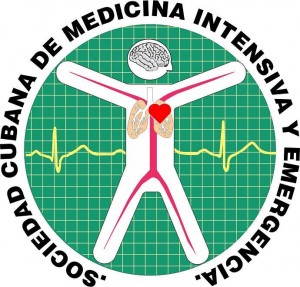Características clínicas de la enfermedad tromboembólica venosa en urgencias antes y durante la pandemia COVID-19
Palabras clave:
tromboembolia venosa, embolia pulmonar, trombosis de la vena, infecciones por coronavirusResumen
RESUMEN
Introducción: Hay varios estudios que apuntan a la asociación entre pacientes hospitalizados con COVID-19 y enfermedad tromboembólica venosa (ETEV).
Objetivo: Evaluar los factores de riesgo y las diferencias según el sexo para la ETEV diagnosticada en los servicios de urgencias hospitalarios y su incidencia antes y durante el periodo COVID-19.
Métodos: Estudio poblacional descriptivo retrospectivo de pacientes atendidos en los servicios de urgencias hospitalarios y diagnosticados de ETEV desde el 1 de enero de 2018 al 28 de febrero de 2021.
Resultados: Durante el periodo, se diagnosticaron de ETEV un total de 698 652 pacientes, muestra de 3425 (0,5 %) pacientes. De todos, un 43,62 % tuvo embolia pulmonar, y un 56,38 % trombosis venosa profunda. La incidencia fue de 445/100 000 pacientes/año en 2019; 467 en 2020; y 474 en 2021. La edad media fue de 67,6 años, con un 50,5 % de varones. En nuestra muestra la ETEV fue más frecuente en varones, excepto en pacientes jóvenes y ancianos. Los factores de riesgo más frecuentes asociados a ETEV fueron la edad y la ETEV previa; en mujeres también la disfunción grave del ventrículo izquierdo y en varones la taquicardia ventricular. El síntoma más frecuente de la embolia pulmonar fue la disnea, y de la trombosis venosa profunda, el edema de la extremidad. La mortalidad en urgencias fue del 0,05 % en la trombosis venosa profunda y de 1,74 % en la embolia pulmonar.
Conclusiones: En el periodo de pandemia por COVID-19 hubo un aumento de la incidencia de ETEV, que es más frecuente con la edad avanzada y con ETEV previa.
Descargas
Citas
1. Heit JA, Silverstein MD, Mohr DN, Petterson TM, Lohse CM, O’Fallon WM. The epidemiology of venous thromboembolism in the community. Thromb Haemost 2001; 86: 452-463.
2. Ascari E, Siragusa S, Piovela F. The epidemiology of deep vein thrombosis and pulmonary embolism. Haematologica 1995; 80 (Supl. 2): 36-41.
3. Echegaray M, Alonso J, Aránzazu M, Abínzano M, Gonzalez C, Solano M. Tromboembolismo pulmonar: evolución a largo plazo y epidemilogía clínica. An Med Interna (Madrid) 2003; 20: 451-456.
4. Carriel Mancilla J, Jiménez Hernández S, Martín-Sánchez FJ, Jiménez D, Lecumberri R, Alonso Valle H, Beddar Chaib F, Ruiz-Artacho P; Grupo de Enfermedad Tromboembólica Venosa de la Sociedad Española de Medicina de Urgencias y Emergencias (ETV-SEMES). Profiles of patients with venous thromboembolic disease in the emergency department and their medium-term prognosis: data from the ESPHERIA registry. Emergencias. 2021 Abr;33(2):107-114.
5. Germini, F., Zarabi, S., Eventov, M., Turcotte, M., Li, M., & de Wit, K. (2021). Pulmonary embolism prevalence among emergency department cohorts: A systematic review and meta-analysis by country of study. Journal of thrombosis and haemostasis : JTH, 19(1), 173–185.
6. Schmid-Schönbein GW, Takase S, Bergan JJ. New advances in the understanding of the pathophysiology of chronic venous insufficiency. Angiology 2001; 52: S 27-S 28.
7. Geerts WH, Heit JA, Clagget GP, Pineo GF, Colwell CW, Anderson FA Jr. Prevention of venous thromboembolism. Chest 2001; 119 (Supl. 1): 132 S-175 S.
8. Nápoles Méndez Danilo, Couto Núñez Dayana. Use of risk factors and clinical predictive models for the diagnosis of the venous thromboembolic disease. MEDISAN [Internet]. 2015 Ene [citado 2021 Mayo 10] ; 19( 1 ): 88-101.
9. Rosendaal FR. Risk factors for venous thrombosis: prevalence, risk, and interaction. Semin Hematol 1997; 34: 171-187.
10. Wells PS, Ginsberg JS, Anderson DR, Kearon C, Gent M, Turpie AG, et al. Use of a clinical model for safe management of patients with suspected pulmonary embolism. Ann Intern Med 1998; 129: 997-1005.
11. Germini, F., Zarabi, S., Eventov, M., Turcotte, M., Li, M., & de Wit, K. (2021). Pulmonary embolism prevalence among emergency department cohorts: A systematic review and meta-analysis by country of study. Journal of thrombosis and haemostasis : JTH, 19(1), 173–185.
12. Freund, Y., Drogrey, M., Cachanado, M., & Bloom, B. (2020). Re: Prevalence of Pulmonary Embolism in ED patients with Suspected COVID-19: The Truth Remains Unknown. Academic emergency medicine : official journal of the Society for Academic Emergency Medicine, 27(11), 1218.
13. Watchmaker, J. M., Goldman, D. T., Lee, J. Y., Choi, S., Mills, A. C., Toussie, D., Finkelstein, M., Sher, A. R., Jacobi, A. H., Bernheim, A. M., Chung, M. S., Eber, C. D., & Lookstein, R. A. (2020). Increased Incidence of Acute Pulmonary Embolism in Emergency Department Patients During the COVID-19 Pandemic. Academic emergency medicine : official journal of the Society for Academic E
14. Freund, Y., Drogrey, M., Miró, Ò., Marra, A., Féral-Pierssens, A. L., Penaloza, A., et al. Association Between Pulmonary Embolism and COVID-19 in Emergency Department Patients Undergoing Computed Tomography Pulmonary Angiogram: The PEPCOV International Retrospective Study. Academic emergency medicine : official journal of the Society for Academic Emergency Medicine, 27(9), 811–820.
15. Sohrabi C, Alsafi Z, O`Neil N, Khan M, Kerwan A, Al-Jabir A, et al. World Health Organization declares global emergency: A review of the 2019 novel coronavirus (COVID-19). Int J Surg. 2020; 76:71-76.
16. McLendon, K., Goyal, A., Bansal, P., & Attia, M. (2020). Deep Venous Thrombosis Risk Factors. In StatPearls. StatPearls Publishing.
17. Alegra A, Innao V, Allegra AG, Musolino C. Coagulopathy and thromboembolic events in patients with SARS-CoV-2 infection: pathogenesis and management strategies. Ann Hematol. 2020; 99(9):1953-1965.
18. Fauvel CH, Weizman O, Trimaille A, Mika D, Pommier T, Pace N, et al. Pulmonary embolism in COVID-19 patients: a French multicentre cohort study. Eur Heart J. 2020; 41(32):3058-3068.
19. Henriet J. P. (1992). La douleur dans les thromboses veineuses des membres inferieurs [Pain in venous thrombosis of the leg]. Phlebologie, 45(1), 67–77.
20. Masotti L, Ray P, Righini M, Le Gal G, Antonelli F, Landini G, Cappelli R, Prisco D, Rottoli P. Pulmonary embolism in the elderly: a review on clinical, instrumental and laboratory presentation. Vasc Health Risk Manag. 2008;4(3):629-36. doi: 10.2147/vhrm.s2605. PMID: 18827912; PMCID: PMC2515422.






